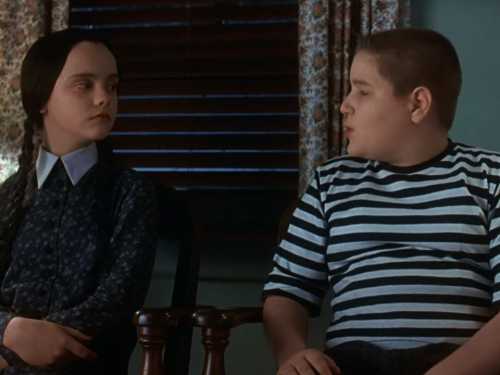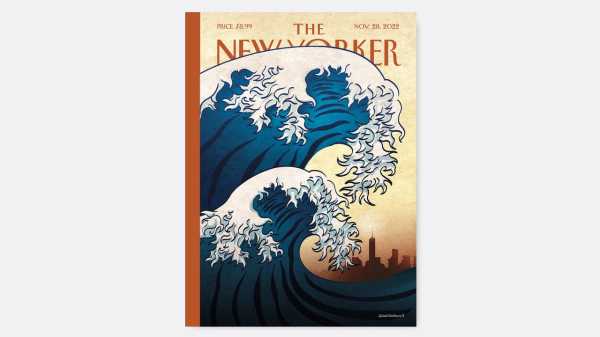
In her new cover, the Germany-based artist Birgit Schössow drew inspiration from an artistic masterpiece. Starting in the late seventeen-hundreds, the Japanese artist Katsushika Hokusai created woodblock prints in a genre called ukiyo-e, part of an artistic movement known as “the floating world.” One of Hokusai’s best-known works is one of a series called “Thirty-six Views of Mount Fuji,” that shows a giant wave cresting in the foreground. The wave’s dramatic curve and stature, topped with a skim of frilly foam, are so eye-catching that you might miss the slender fishing boat it’s about to topple onto. That work shows humanity at the mercy of nature. That was before our carbon emissions started reshaping the atmosphere, putting nature at the mercy of humans. In the Climate Issue, New Yorker writers reëxamine that relationship in an era in which climate change is affecting today’s oceans and the stories we tell about the future.
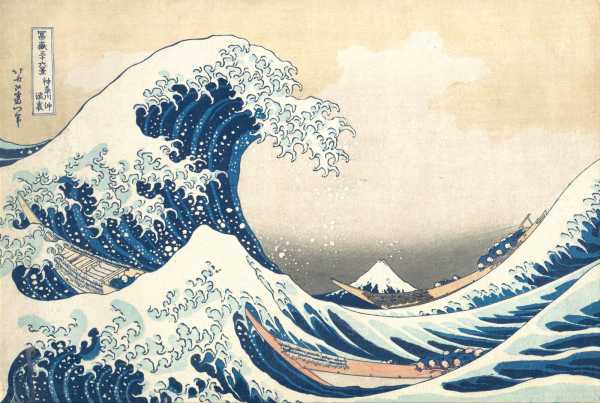
Hokusai’s “Under the Wave off Kanagawa,” circa 1830-32, is said to have inspired Debussy’s piece “La mer” (The Sea) and Rilke’s poem “Der Berg” (The Mountain).
Do you find that your environment affects your work?
I live near the Baltic Sea. The sea is part of life’s cycle. The large wave on the cover is menacing but, of course, there are also so many positive sides. In summer, I often sit for a long time in a big swimming ring, splash around, look at the sun-drenched landscape, and think up stories for my picture books. Or I build ideas in my mind for book covers or suggestions for a New Yorker cover. It’s likely that my Hokusai-inspired wave was dreamed up then. So of course my environment flows into my work. Again and again, I create illustrations and stories in which the sea plays a role.
Is climate change affecting you personally, and what changes are you making to address it?
I buy a lot of organic food. Since I live in the country, I need a small car, but I’ve kept my fourteen-year-old one. It doesn’t use much gas. I don’t fly around. And we have lots of trees on the property.
Do you often look at images from art history for inspiration, or where else do you find inspiration?
Hokusai’s wave was an obvious inspiration for this image. And I once turned “American Gothic” into a gay wedding. But I don’t look at art to find ideas—it’s more like the images I have looked at come back to mind when I’m thinking visually. Sometimes it’s simply colors that inspire me—Hamburg in autumn, or the old wall of a house. And sometimes inspiration comes from a film. Jacques Tati’s “Les Vacances de Monsieur Hulot,” for example, prompted my new picture book—it takes place in a beach hotel.
What advice would you give to young artists entering the field?
There is no more a recipe for being an illustrator than there is for living life. Everyone makes his own mistakes . . . but what are mistakes? The important thing is not to lose the fun. If you lose the pleasure of drawing and painting, that’s the biggest mistake. That’s why I’m always trying new approaches. As a result, I don’t really have a consistent style. Is it a mistake? Maybe . . . but it’s been a lot of fun for over the past thirty years!
See below for more covers dealing with climate change:
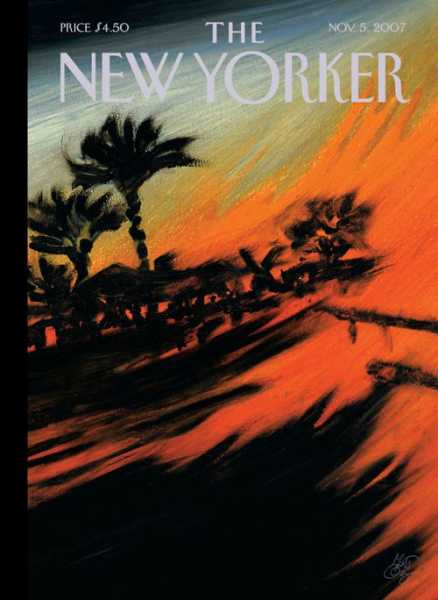
“Wild Fires,” by Lorenzo Mattotti
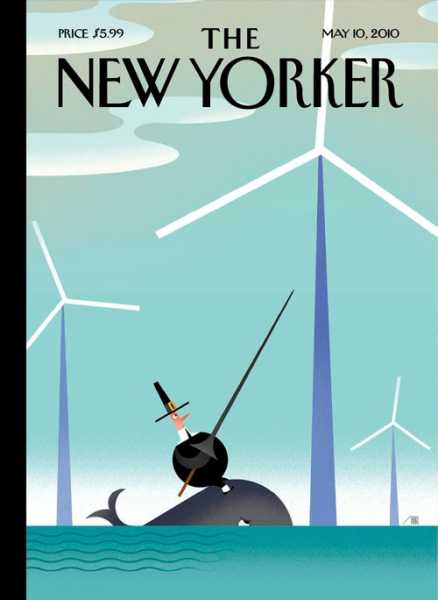
“Tilt,” by Bob Staake
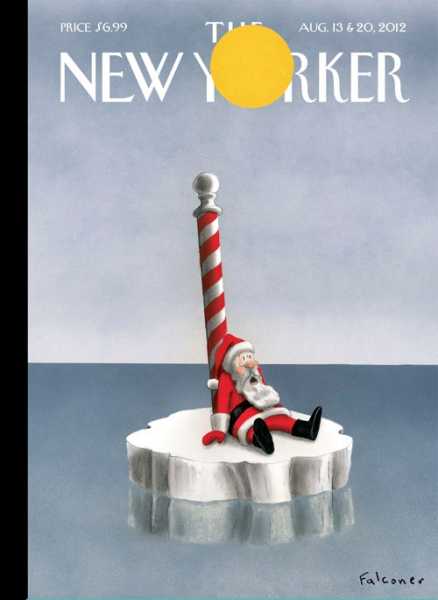
“High Noon,” by Ian Falconer
Find Birgit Schössow's covers, cartoons, and more at the Condé Nast Store.
Sourse: newyorker.com
